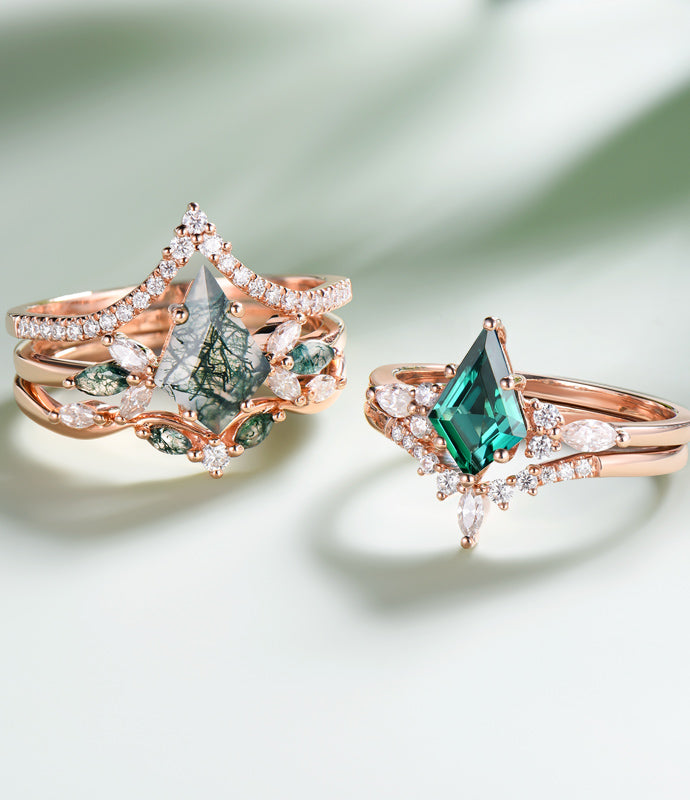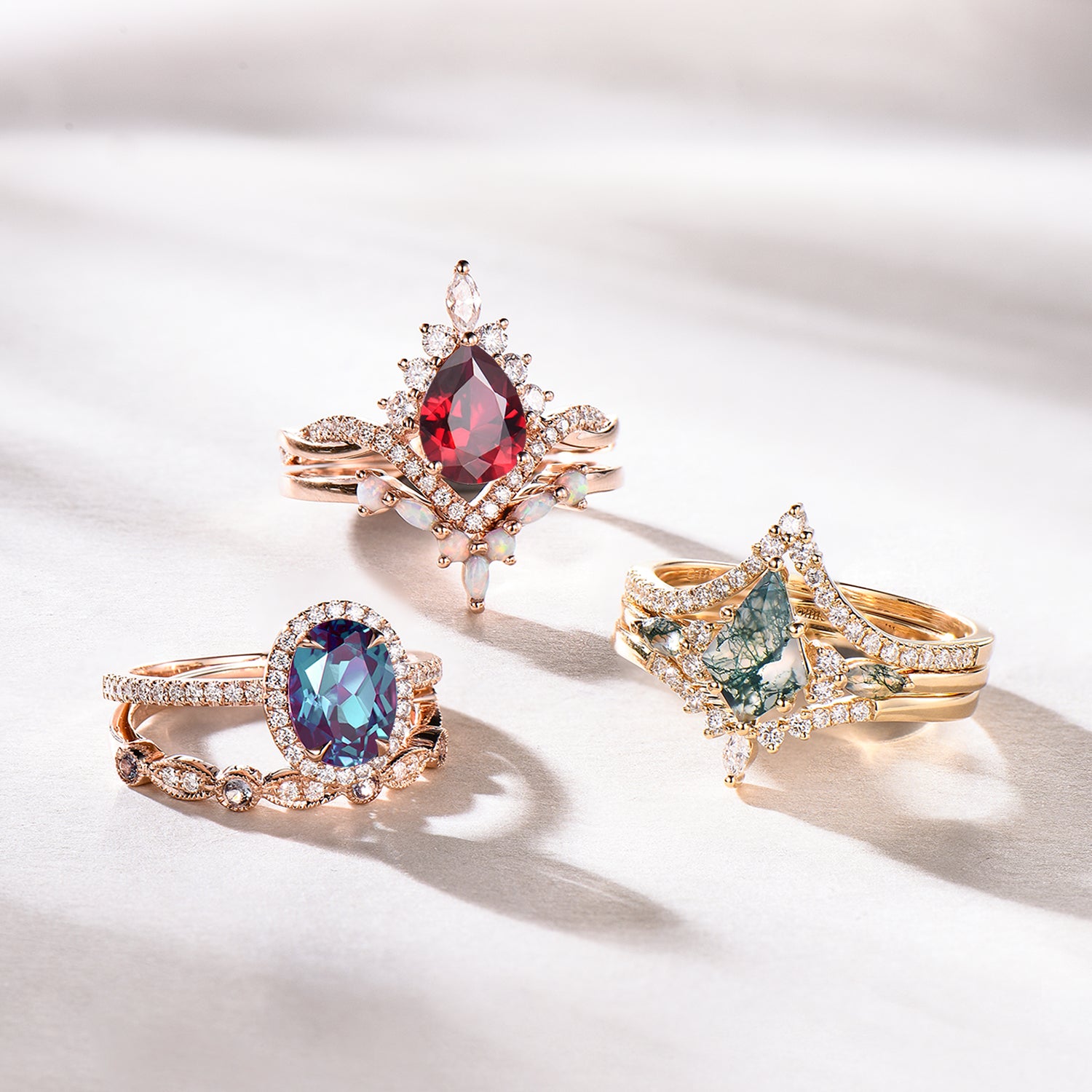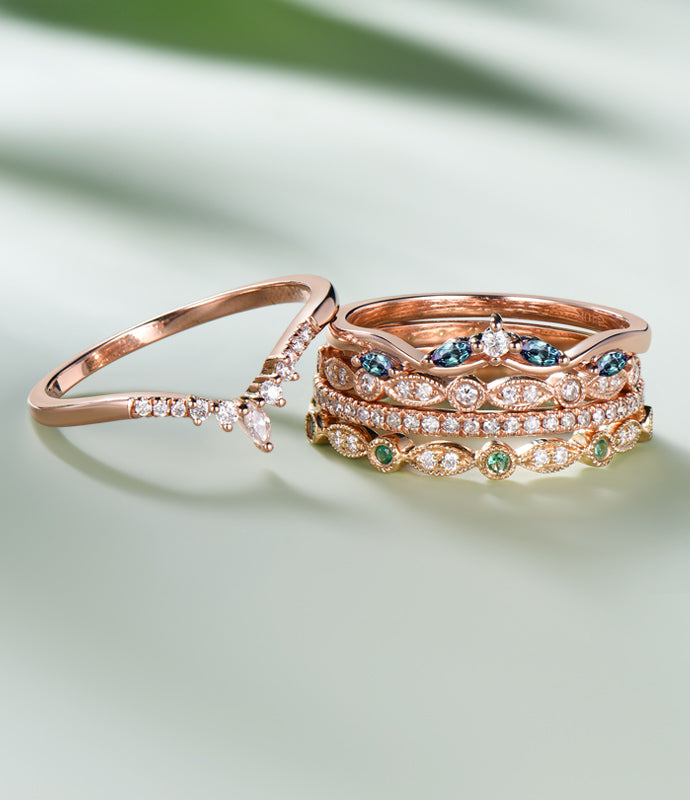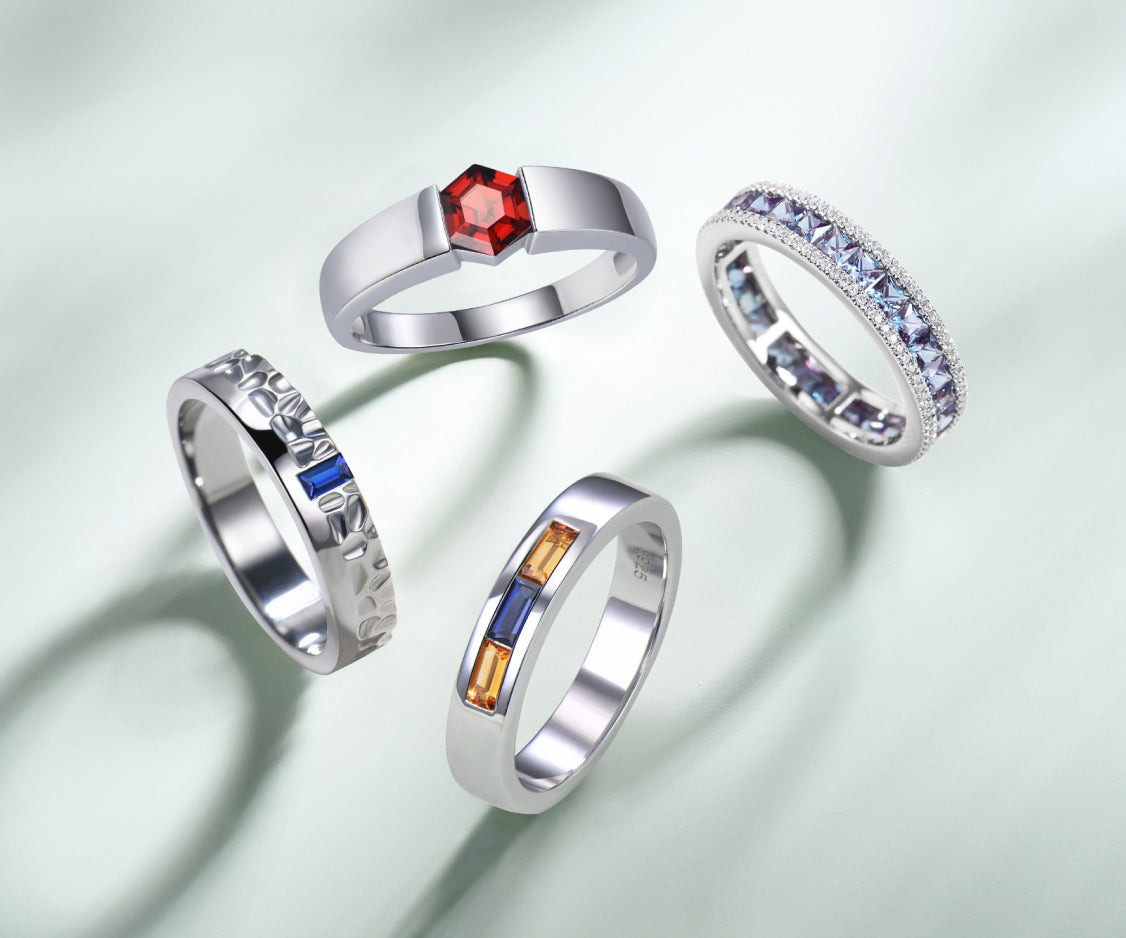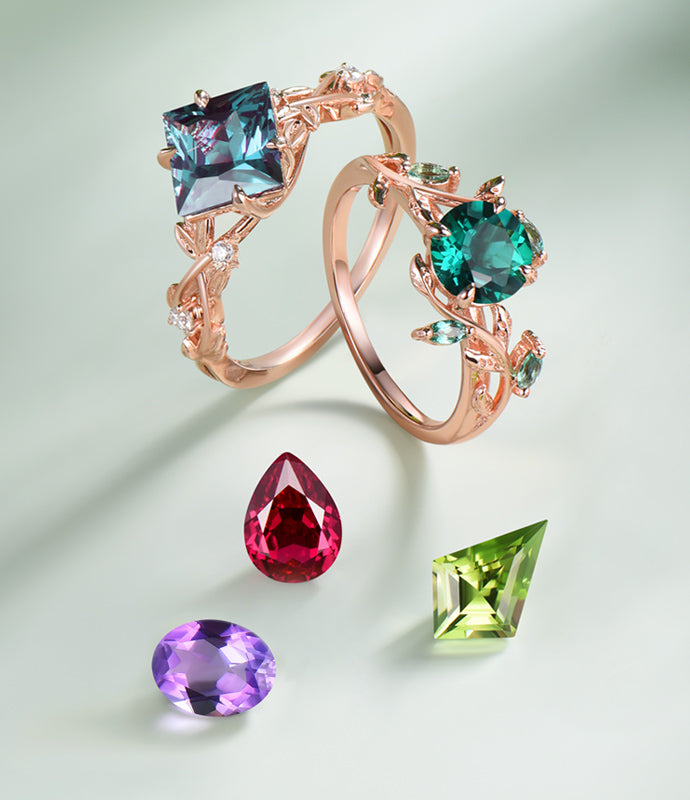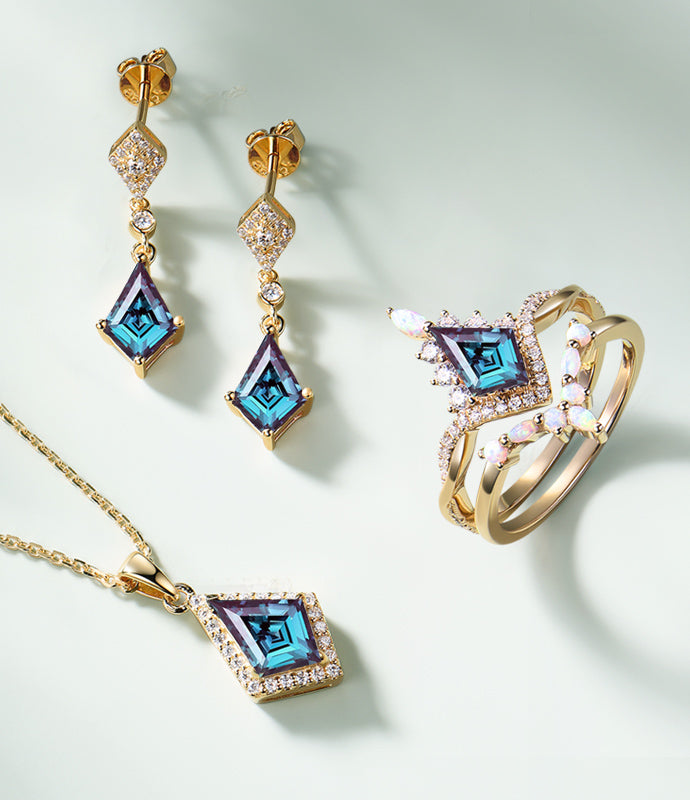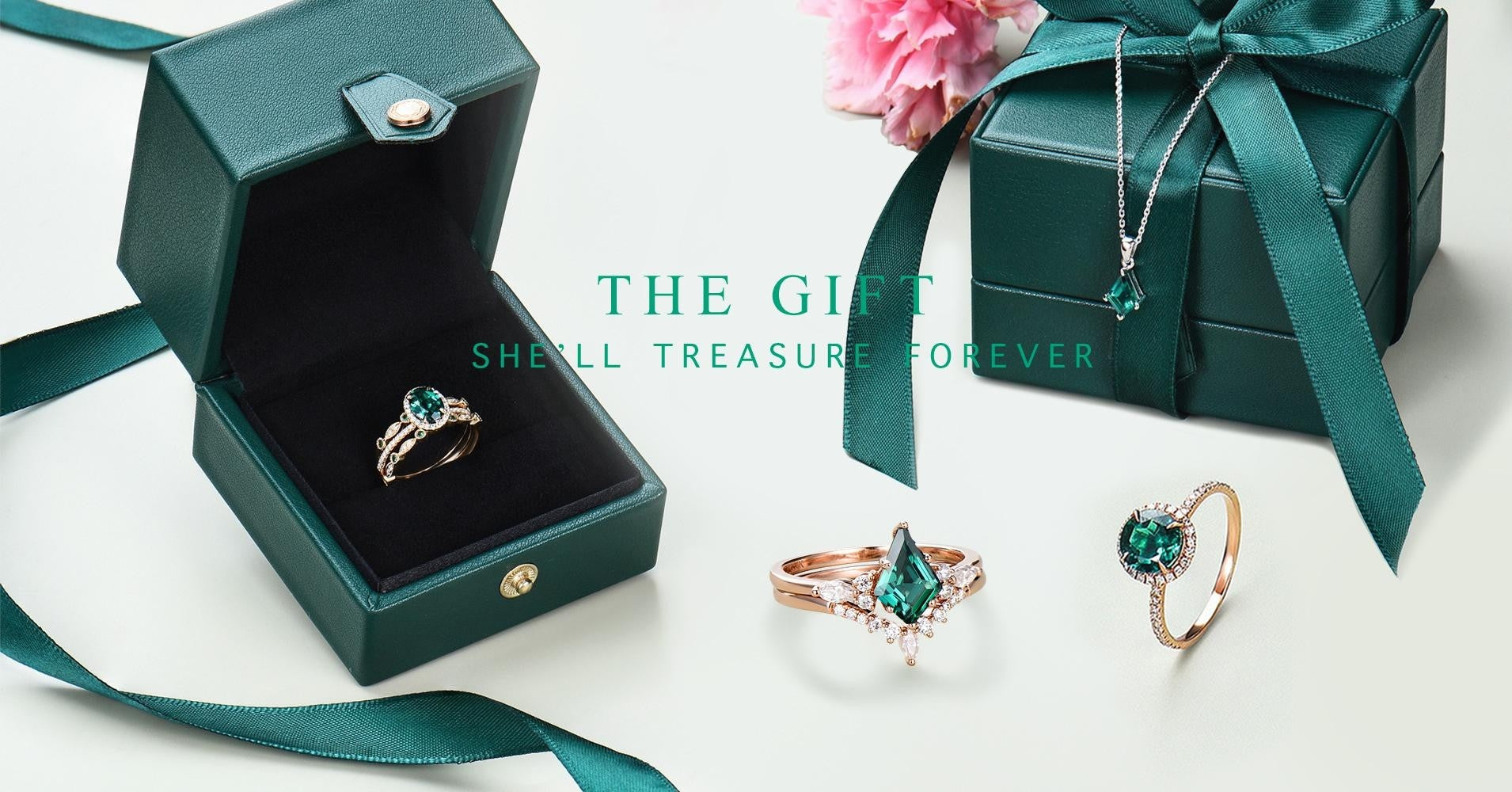The Golden Gem Showdown: Yellow Topaz vs Citrine
In the radiant world of gemstones, where brilliance and beauty reign supreme, two gemstones of golden hue stand out with their captivating beauty and mesmerizing charm: Yellow Topaz and Citrine. These gems, with a shine similar to the sun, bring to the mind visions of radiant sunsets and amber-colored horizons. At first glance, they may appear similar, but when you look closer, each possesses its own appearance, properties, and significance.
Yellow Topaz, a gem with a rich history and diverse color variations, has fascinated humanity for centuries. Its brilliance and radiance have often led to it being mistaken for other precious stones. Revered for its mesmerizing beauty, Yellow Topaz holds a special place in the hearts of gem lovers and enthusiasts.
On the other hand, Citrine, known as the "merchant's stone," is celebrated for its vibrant energy and association with prosperity and abundance. This gem embodies the warmth and vitality of the sun, bringing joy and optimism to those who wear it. Its golden hues have long been cherished by individuals seeking to channel positive vibrations and attract success into their lives.
As we delve deeper into the battle of these golden gems, we will explore their origins, properties, and the subtle nuances that set them apart. Whether you're a seasoned lovers of gemstone jewelries, aspiring gemologist, or simply someone captivated by the beauty of these gems, this guide will help you better understand the fascinating world of Yellow Topaz and Citrine. It will offer insights into their enduring appeal, helping you to fully appreciate the intricate details that make each gem so special.
Historical Background
The beauty of gemstones are much more than just their physical beauty, as many of these precious stones carry with them tales and traditions that have been passed down through ancient civilizations. Yellow Topaz and Citrine, in particular, boast rich histories that have become intertwined with various cultures, beliefs, and legends over several thousand years. These gems have captured the imagination of people throughout time, leaving a lasting impact on the world of gemology and the stories we tell.
Yellow Topaz
The origins of the name "Topaz" can be traced back to the Sanskrit word 'tapas,' which means 'fire,' a fitting tribute to its fiery golden hue. Throughout history, ancient Egyptians and Romans revered Yellow Topaz, associating it with the Sun God and believing in its healing and protective properties. It was believed that this gemstone bestowed wisdom, longevity, and courage upon its wearers. During medieval times, Yellow Topaz was considered to possess the ability to dispel spells and calm anger. Its vibrant color made it highly sought after by royalty and clergy, often serving as a symbol of wealth and influence.
Citrine
Citrine, with its radiant sun-kissed glow, carries its own set of captivating legends. The name "Citrine" stems from the French word 'citron,' meaning 'lemon,' perfectly capturing its lemon-yellow tint. Throughout ancient times, Citrine was used in protective amulets to ward of snakes, deal with snake venom and negative thoughts, carried by those who sought its shielding properties. Merchants and traders had a special affinity to this gem, believing it to possess the power to attract wealth and prosperity. In various cultures, it was also believed to bring happiness and generosity, earning it the endearing nickname of the "merchant's stone."
While both Yellow Topaz and Citrine are adored for their exquisite beauty, it is their historical significance that adds layers of depth to their beauty. From ancient rituals to regal adornments, these golden gems have played pivotal roles in countless stories, transforming them from mere pieces of jewelry into fragments of history itself.
Geological Formation and Origin
The captivating journey of a gemstone, from its origins deep within the Earth's crust to its transformation into sparkling jewelry, is a tale of time, pressure, and remarkable transformation. Yellow Topaz and Citrine each boast their own unique geological stories that give them their distinct characteristics. These stories of their formation further enhance the enchantment and fascination that surrounds these golden gems.
Yellow Topaz
Yellow Topaz is formed under extreme conditions of high temperature and high pressure, primarily found within igneous rocks such as pegmatites and rhyolites. During the final stages of the solidification of molten rock, fluorine-rich vapors play a crucial role in facilitating the formation of Yellow Topaz. The captivating vibrant yellow hue of this gem is a direct result of stable metal impurities embedded within its crystal structure. Geographically, notable deposits of Yellow Topaz can be found in places like Brazil, Nigeria, Russia, and Australia with each location offering unique variations in terms of color and clarity.
Citrine
Citrine, a captivating variety of quartz, owes its enchanting golden hue to the presence of iron impurities embedded within its crystalline lattice. The majority of natural Citrine is formed through the heat treatment of amethyst, another quartz variety. While Citrine deposits can be found across the globe, Brazil emerges as the primary source, closely followed by Madagascar and the Ural Mountains in Russia. These regions contribute significantly to the availability of this mesmerizing gemstone.
Gaining insight into the geological formation and origins of these gemstones allows for a profound appreciation of their exquisite beauty. It serves as a reminder that beyond their captivating shining surfaces, there exists a rich history spanning countless millennia, shaped by the very forces that have sculpted our remarkable planet.
Physical and Gemstone Properties
To make an informed choice between Yellow Topaz and Citrine, it is important to have a comprehensive understanding of their physical and gemological properties. These properties play a significant role in determining not only the appearance of the gem but also its durability and suitability for different types of jewelry. Such knowledge is invaluable when considering which gemstone best aligns with one's preferences and needs.
Yellow Topaz
- Hardness:Yellow Topaz is a tough gem with a Mohs hardness of 8. It can handle the wear and tear of everyday life. However, its perfect cleavage means it can split or chip if struck at the right angle, so it appreciates gentle handling.
- Luster:Yellow Topaz loves to shine and sparkle. With its vitreous luster, it dazzles when cut and polished, just like a star on the red carpet.
- Refractive Index:Yellow Topaz has a knack for bending and refracting light, thanks to its refractive index that ranges from 1.609 to 1.643. This ability adds to its brilliance and makes it the life of the party.
- Specific Gravity:Yellow Topaz has a density comparable to many other precious stones. It fits right in with its gemstone friends, never feeling out of place.
Citrine
- Hardness:Citrine, being a variety of quartz, has a Mohs hardness of 7. It's a tough gem that can handle most jewelry applications without getting easily scratched.
- Luster:Citrine has a glassy shine, thanks to its vitreous luster. It loves to reflect light and brighten up any room it enters.
- Refractive Index:With a consistent refractive index of around 1.54, Citrine plays well with light and creates a visually appealing display. It's like a master of illusions, always captivating and intriguing.
- Specific Gravity:Citrine is slightly lighter than many other gemstones, with a specific gravity of approximately 2.65. It's like the friend who effortlessly floats through life, bringing a sense of lightness wherever it goes.
Beyond their technical qualities, both Yellow Topaz and Citrine have their own unique colors and inclusions. Yellow Topaz range from pale yellow to a rich golden hue, while Citrine offers a spectrum of colors from lemon yellow to reddish-brown. Inclusions, like tiger stripes or feather patterns, can add to their individuality and desirability.
When it comes to choosing between Yellow Topaz and Citrine, personal preference plays a significant role. It's important to choose the gem that resonates with you the most.
Care and Maintenance
To keep Yellow Topaz and Citrine looking their best, they require some special care, just like all gems do.
Yellow Topaz
- To clean a yellow topaz,use lukewarm soapy water and a soft brush to softly clean and remove any dirt or grime. Ultrasonic cleaners or steamers might cause the stone to fracture, and so must be avoided.
- Store yellow topaz separately in a soft pouch or lined jewelry box to prevent scratches. It's best to keep it away from other gemstones, especially diamonds, which can be a bit rough.
- Yellow Topaz should not be exposed to harsh chemicals or extreme sunlight. It's best to remove your Topaz jewelry when swimming or using household cleaners.
Citrine
- Citrine can be cleaned with warm soapy water and a soft cloth as it is just as durable as yellow topaz, if not more but avoid those ultrasonic cleaners, just to be safe.
- Citrine should be stored separately in a fabric-lined box or a soft pouch to prevent any scratches.
- Sudden temperature changes can damage citrine gemstones. You should avoid prolonged exposure to direct sunlight or extremely cold environments.
- Citrine is suitable for daily wear but should be removed during rigorous activities to prevent potential damage.
Both gemstones benefit from periodic professional cleaning and inspection. A reputable jeweler can ensure that everything is in order and provide a thorough cleaning to keep your jewelry in pristine condition. Remember, while these gems are sturdy, they're not indestructible. If treated with care and respect all the time, they can last several generations to come.
Conclusion
Yellow Topaz and Citrine, with their unique personalities and charm, have captivated hearts and minds for centuries. Whether you're drawn to the deep attraction and history of Yellow Topaz or the vibrant and transformative energies of Citrine, they both display unrivalled beauty and esteemable value. So, go ahead and choose the gem that speaks to your heart and that of your significant other. Just like you, gemstones have their own stories waiting to be cherished and passed down through generations.




